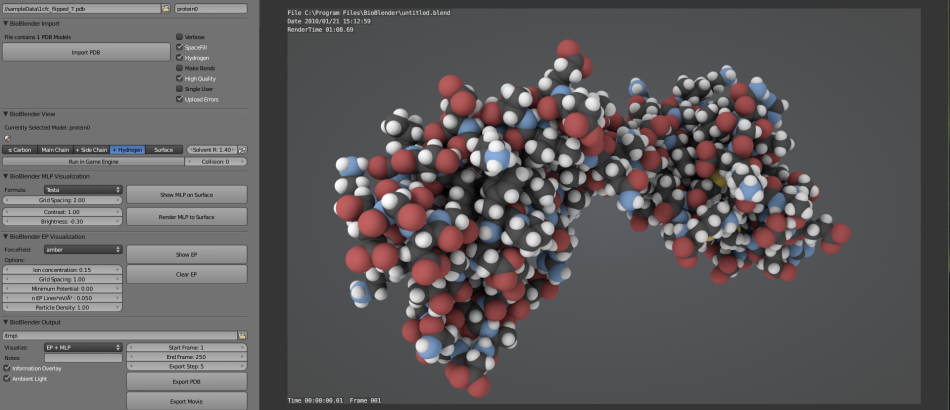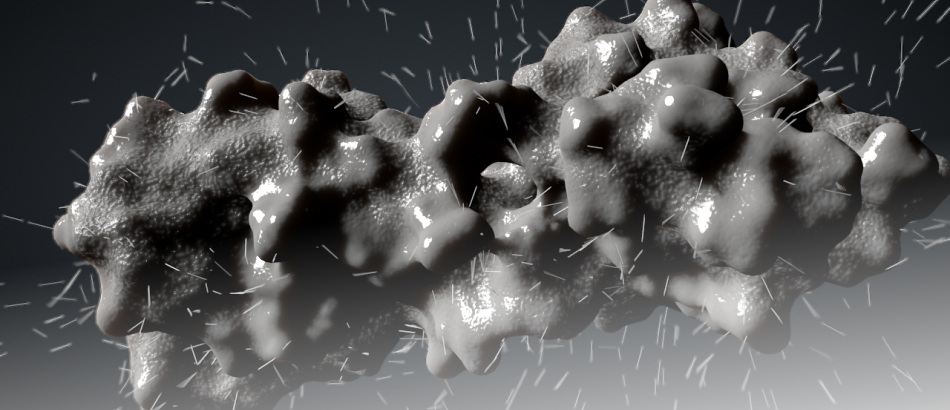

The BioBlender project is dicontinued.
I thank all the people that have contributed to it in the 15 years of its existence, including the users that helped to test it and to keep it somehow alive for the latest period.
In particular my gratitude goes to the group that initially developed it (in Blender 1.5!), in the SciVis group and the Blender Community.
The page will remain active for some time, but the program will not be updated.
There are two main reasons for closing: on one side, BB was developed 15 years ago, and its structure is hardly compatible with the new Blender versions, especially since we have no funding for updating it regularly. On the other side, the new ‘Node Everything’ structure of Blender have made it possible to introduce and elaborate structural biology models in a much more efficient way, as demonstrated by the great work by Brady A Johnston, that the Blender users already adopted.
I hope that some legacy from BioBlender will survive, especially the concept of decorating the molecules with their physico-chemical properties, which are (in my biased opinion) still unsurpassed as visual effects, even if too cumbersome to calculate and display.
Thanks again to all,
Monica Zoppè
January 2023
BioBlender is a software package built on the open-source 3D modeling software Blender.
Biology works at nanoscale, with objects invisible to the human eye. With BioBlender it is possible to show some of the characters that populate our cells, based on scientific data and the highest standard of 3D manipulation. Scientists all over the world study proteins at atomic level and deposit information in the public repository Protein Data Bank, where each molecule is described as the list of its atoms and their 3D coordinates.
With BioBlender users can handle proteins in the 3D space, displaying their surface in a photorealistic way, and elaborate protein movements on the basis of known conformations.
PDB files can be loaded from a user-defined directory or downloaded directly from the PDB site (by inserting the PDB code). The protein is displayed in 3D (as atoms or molecular surface) and the user can calculate and visualize its surface properties, Molecular Lipophilic Potential and Electrostatic Potential. For protein motion, BioBlender calculates intermediates between two conformations using Blender Game Engine. The program gives as output both the intermediate PDB files and the rendered images as a movie.
BioBlender is an implementation of Blender, an open source, freely distributed, multiplatform, interoperable and supported program of 3D animation, visual effects and video games.
The combination of 3D computer graphics, game engine and scientific programs, make of BioBlender a complete instrument to elaborate the movement of proteins and to display their surface features using a visual code based on texturing and particles special effects. In this way it is possible to show the physical and chemical properties of a molecule in motion.
BioBlender is the result of a collaboration, driven by the SciVis group at the CNR in Pisa (Italy), between scientists of different disciplines (biology, chemistry, physics, computer sciences) and artists, using Blender in a rigorous but at the same time creative way.
BioBlender is created and maintained by the SciVis Group of the Institute of Clinical Physiology - CNR, Italy.